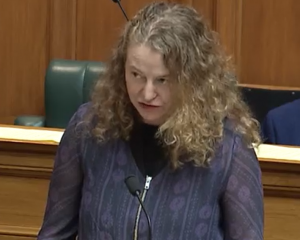
A substantial overhaul of the under-funded attendance system is needed, says the Education Review Office, as chronic absence reaches crisis point.
In a report published on Wednesday the office said 80,000 children were chronically absent in term two this year, generally the worst of the four school terms in terms of attendance.
It said that meant one in 10 students missed more than 30 percent of class time that term, double the figure 10 years ago.
The report said more than half the absent students blamed their mental health, and more than a quarter cited their physical health.
"When you have multiple physical and mental health issues, it's hard for people who haven't experienced those things to really understand," one student told the report's authors.
"I was bullied and threatened at school and the school didn't respond in a way to keep me safe, so I had no choice but leave school," said another.
The report said students from low-income areas were six times more likely than other students to be chronically absent.
It said 22 schools accounted for 10 percent of chronically absent students and five schools had chronic absence rates above 50 percent.
The report said the attendance system was under-funded and ineffective, and that schools acted too slowly to report truants to attendance services, which in turn struggled to get children back to school.
"Schools have tools in place to identify when students are chronically absent, but often wait too long to intervene. Only 43 percent of parents and whānau with a child who is chronically absent have met with school staff about their child's attendance. One in five school leaders (18 percent) only refer students after more than 21 consecutive days absent. Just over two-thirds of Attendance Service staff report schools never, or only sometimes, refer students at the right time (68 percent). Approximately half of schools do not make referrals to Attendance Services," the report said.
It said schools and attendance services were not set up to enforce attendance.
"Just over half of school leaders (54 percent) and just over three in five Attendance Service staff (62 percent) do not think there are good options to enforce attendance and hold people accountable. Schools that have tried to prosecute have found the process complex and costly," the report said.
It said attendance service staff were passionate about their work, but their organisations were under-funded.
"I find the schools and other providers often do not understand what our role is and often expect a lot more from us than we can realistically do. The whānau also have unrealistic expectations. Many of them believe we are trained professionals (have studied etc.) and that we will have a magic fix and/or will turn up every day to force their kid to go to school for them," a staff member told the review.
The report said when chronically absent students did return to school, their schools often did not do enough to ensure they reintegrated successfully.
An attendance service staff member told the report the education system needed to "provide quality education options to students for whom mainstream school is not the best option, and different education options for neurodiverse and disabled learners where appropriate".
The report said students who were chronically absent had worse education and life outcomes than other students.
Half of the 20-year-olds who were chronically absent when they were of school age did not have NCEA level two and nearly half the 25-year-olds are on welfare benefits.
"To reduce chronic absence, we need an end-to-end effective system and supports. Our current system for addressing chronic absence does not deliver this. We need to transform the system by building stronger functions (what happens) and reforming the model (how it happens)," the report said.
It called for a range of changes, including tougher action by schools.
"Increase use of enforcement measures with parents and whānau, including more consistent prosecutions, wider agencies more actively using attendance obligations, and learning from other countries' models (including those who tie qualification attainment to minimum attendance)," it recommended.
It said parents and guardians could be fined up to $30 for every day their child was absent or not enrolled in a school up to $300 for a first offence and $3000 for subsequent offences.
The report also recommended more funding for attendance services and schools and more support for struggling families and students.
The report said 18 percent of Māori students and 17 percent of Pacific students were chronically absent in term two, compared with eight percent of Pākehā students and six percent of Asian students.
In a statement, Associate Education Minister David Seymour said the report was further evidence of a truancy crisis.
"Chronic absence has doubled since 2015. This report reinforces that action is needed to ensure this generation reaches its full potential."
He said it would be mandatory for all schools to have an attendance management plan based on the Stepped Attendance Response (STAR) system from the beginning of the 2026 school year.
"The ministry will work with schools, the Attendance Service, non-government agencies and other government agencies to streamline this. The ministry will also provide best practice templates for attendance plans and toolkits for dealing with absent students, depending on the reasons for absence."













